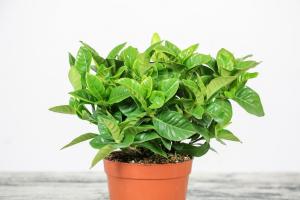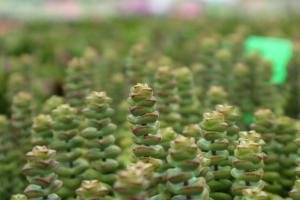Introduction
Many people use indoor plants to spruce up their homes or offices, but few realize that some plants can be harmful if ingested by pets or children. One such plant is the rubber tree, also known as Ficus elastica. In this article, we will examine whether the rubber tree plant is poisonous and how it can affect human and animal health.
What is a Rubber Tree Plant?
The rubber tree plant is a popular indoor plant native to Southeast Asia. It is known for its large, shiny leaves and ease of growth, making it a common choice for home and office decoration. The plant is also used in the production of rubber, hence its name.
Is the Rubber Tree Plant Poisonous?
Yes, the rubber tree plant is considered poisonous. The plant contains a harmful sap, which can cause skin irritation, allergic reactions, and digestive problems if ingested. The sap, also known as latex, contains a protein known as ficin, which can break down protein molecules in the body and cause allergic reactions.
How does the Rubber Tree Plant Affect Human Health?
If the sap of the rubber tree plant comes into contact with human skin, it may cause skin irritation or an allergic reaction. Symptoms may include itching, redness, and swelling. In severe cases, the affected area may develop blisters or hives. If you come into contact with the sap, it is important to wash the affected area with soap and water as soon as possible.
If the sap is ingested, it can cause digestive problems, including nausea, vomiting, and diarrhea. In some cases, ingesting the sap may also cause an allergic reaction, which can be life-threatening. In general, it is best to avoid ingesting the sap of the rubber tree plant and seek medical attention if you experience any adverse symptoms after exposure.
How does the Rubber Tree Plant Affect Animal Health?
If a pet ingests the leaves or sap of the rubber tree plant, it may develop digestive problems or an allergic reaction. Symptoms may include vomiting, diarrhea, difficulty breathing, and swelling. In severe cases, ingestion of the plant can be fatal. It is important to keep pets away from the rubber tree plant and seek veterinary attention if you suspect your pet has ingested it.
Conclusion
The rubber tree plant is a popular indoor decoration, but it is important to be aware of its potential dangers to human and animal health. The sap of the plant can cause skin irritation, allergic reactions, and digestive problems if ingested. It is best to avoid exposing yourself, your children, and your pets to the plant and seek medical attention if you experience any adverse symptoms.

 how many times do yo...
how many times do yo... how many planted tre...
how many planted tre... how many pine trees ...
how many pine trees ... how many pecan trees...
how many pecan trees... how many plants comp...
how many plants comp... how many plants can ...
how many plants can ... how many plants and ...
how many plants and ... how many pepper plan...
how many pepper plan...
































